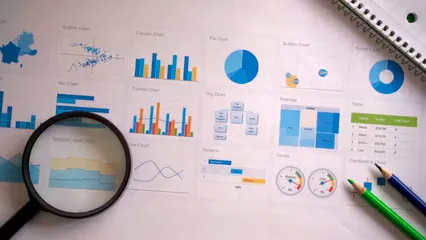Introduction
Cost-benefit analysis (CBA) is a crucial tool for informed decision-making. It helps businesses and policymakers evaluate the financial implications of their choices. By weighing costs against anticipated benefits, organizations can identify the most effective strategies. This method is vital across various sectors, including finance, healthcare, and environmental policy.
To get started on your CBA journey, consider using a Cost-Benefit Analysis Template. It can streamline your analysis process and ensure you cover all essential components.
Summary and Overview
Cost-benefit analysis systematically compares the costs and benefits of a decision, project, or policy. The primary purpose is to assess whether the benefits outweigh the costs, guiding organizations toward financially viable options. Historically, CBA dates back to the work of Jules Dupuit in the 19th century. Over the years, it has evolved into a structured framework used by governments and businesses alike. The foundational principles include quantifying both tangible and intangible factors, ensuring accurate assessments. CBA assists organizations in resource allocation, enhancing efficiency and profitability. By utilizing this analysis, decision-makers can optimize investments and avoid costly missteps.

For those looking to dive deeper into decision-making strategies, I highly recommend “The Lean Startup” by Eric Ries. It’s a fantastic guide to innovative decision-making and efficient resource management.
What is Cost-Benefit Analysis?
A cost-benefit analysis is a method that evaluates the financial implications of different options. It involves identifying and quantifying costs and benefits associated with a specific decision or project.
Costs can be divided into direct, indirect, and opportunity costs. Direct costs are easy to measure, such as materials and labor. Indirect costs include overhead expenses, while opportunity costs represent potential gains lost when choosing one option over another.
Benefits can be tangible, like increased revenue, or intangible, such as improved employee morale. Quantifying both aspects is essential for a comprehensive analysis.
CBA is widely applied in both private and public sectors. For instance, the benefit-cost ratio (BCR) helps organizations determine if a project is worthwhile. In fact, studies show that projects using CBA often achieve higher success rates.
To enhance your financial modeling, consider investing in Microsoft Excel. This powerful tool can help you create complex models and streamline your analyses.
Understanding Cost-Benefit Analysis
Cost-benefit analysis (CBA) serves as an essential framework for decision-making. It helps organizations assess the financial viability of projects by comparing costs and benefits. The roots of CBA trace back to Jules Dupuit, a French engineer, who introduced this analytical method in 1848. His work laid the foundation for measuring social profitability in projects.
CBA gained traction in the 20th century, particularly within U.S. federal agencies. The Corps of Engineers played a pivotal role in establishing structured CBA practices. By the 1930s, it became a vital tool for evaluating public works projects. Influential economists like Alfred Marshall and Otto Eckstein further refined these concepts, shaping modern CBA applications.
Today, CBA is prevalent across various sectors. Organizations use it for economic analysis, risk assessment, and project evaluation. Current trends showcase CBA’s application in areas like environmental sustainability and healthcare investments. As the landscape evolves, CBA remains relevant for informed decision-making.

The Cost-Benefit Analysis Process
Conducting a cost-benefit analysis involves a straightforward, step-by-step process. First, define the project’s scope. This includes setting clear objectives and identifying stakeholders. Next, identify and categorize costs associated with the project. These can be direct costs, indirect costs, and opportunity costs.
Following this, identify and categorize the benefits. Benefits can be tangible, like increased revenue, or intangible, such as enhanced customer satisfaction. After listing costs and benefits, calculate the net present value (NPV). This metric helps you understand the project’s financial impact over time.
Finally, make informed recommendations based on the analysis. Projects that follow this CBA process often see higher success rates. Research indicates that organizations utilizing CBA report better project outcomes and resource allocation. By following these steps, you ensure your decisions are grounded in solid financial metrics.
Define the Project’s Scope
Defining the project’s scope is vital for any successful cost-benefit analysis. First, you need to establish clear objectives. What are the desired outcomes? This clarity helps align the team and stakeholders. Next, identify the limitations. What resources are available? What constraints might impact the project?
Engaging stakeholders early in this process is essential. Who will be affected by this project? Their insights can guide your objectives and help identify potential challenges. Creating a collaborative environment fosters buy-in and ensures all perspectives are considered.
Setting realistic timelines and resource requirements also plays a crucial role. How long will the project take? What resources are necessary? By mapping out these elements, you create a solid foundation for your analysis. This groundwork supports smoother execution and helps avoid pitfalls down the road.

Identify and Categorize Costs
In a cost-benefit analysis, accurately identifying and categorizing costs is crucial. Start by breaking down the different types of costs involved. Direct costs are easily identifiable, like labor and materials. Indirect costs may include overhead expenses, which are less straightforward.
Don’t forget about intangible costs. These can impact employee morale or brand reputation, although they are harder to quantify. Opportunity costs represent potential gains when you choose one option over another. Understanding these categories helps you create a comprehensive cost picture.
Estimating each cost category accurately is vital. Use historical data and industry benchmarks to inform your estimates. Remember, precise cost estimation ensures your analysis is reliable. Poor estimates may lead to misguided decisions that affect your project’s success.
For those who find financial calculations daunting, a Financial Calculator can be a lifesaver. It simplifies complex calculations, allowing you to focus on the bigger picture.

Identify and Categorize Benefits
Once costs are outlined, it’s time to identify and categorize benefits. Start by quantifying both tangible and intangible benefits. Tangible benefits are straightforward, like increased revenue or reduced expenses. Intangible benefits may include enhanced customer satisfaction or improved employee engagement.
Valuing benefits often requires creative approaches. Consider methods like surveys or market research to assign monetary value to intangible factors. This process can significantly impact decision-making, as it emphasizes the project’s broader implications.
Understanding the impact of these benefits is essential. How do they influence overall project viability? By capturing both tangible and intangible benefits, you’re better equipped to make informed decisions. This holistic view ultimately guides your organization toward the most beneficial outcome.

Calculate Net Present Value (NPV)
Calculating the net present value (NPV) is a vital step in cost-benefit analysis. The NPV helps determine the profitability of a project by comparing expected cash inflows and outflows over time. The process begins by estimating future cash flows, which are then discounted back to their present value using a discount rate.
The discount rate is essential. It reflects the opportunity cost of capital. A higher discount rate reduces the present value of future cash flows. This adjustment accounts for risk and inflation, ensuring that future earnings are compared fairly with current costs.
The formula for NPV is straightforward:
NPV = ∑ (Bt - Ct) / (1 + i)t
Here, Bt is the benefit at time t, Ct is the cost at time t, and i is the discount rate. By applying this formula, you can assess whether a project’s benefits outweigh its costs effectively. This analysis is crucial for investment analysis and helps stakeholders make informed choices.

Make Recommendations Based on Analysis
Interpreting the results of a cost-benefit analysis is key for decision-making. When NPV is positive, it indicates that benefits exceed costs, suggesting the project is worth pursuing. Conversely, a negative NPV signals that costs outweigh benefits, prompting reevaluation.
Based on this analysis, recommendations can be made regarding project implementation. If the NPV is favorable, you can advise moving forward. If the NPV is negative, consider suggesting adjustments to the project or exploring alternative options. This decision-making process is essential for assessing project viability and ensuring resources are allocated wisely.
It’s important to communicate findings effectively to stakeholders. Clear explanations and visual aids can help convey complex data, fostering better understanding and support for recommendations. By basing decisions on thorough analysis, organizations can enhance project outcomes and optimize their investments.

Advantages of Cost-Benefit Analysis
Cost-benefit analysis offers several advantages in decision-making. First, it promotes data-driven choices. By quantifying both costs and benefits, organizations can avoid biases in judgment. This objective approach leads to better outcomes.
Additionally, CBA aids in risk mitigation. By identifying potential pitfalls and hidden costs, it helps organizations prepare for uncertainties. This foresight enhances resource optimization, ensuring funds are allocated efficiently.
Furthermore, CBA improves stakeholder communication. Presenting clear, quantifiable data fosters transparency and builds trust. Studies show that projects backed by thorough CBA often achieve improved outcomes. Implementing strategic planning based on CBA findings can enhance overall project viability and success rates.

If you’re looking to improve your time management skills, a Time Management Planner can be a game-changer. It helps you prioritize tasks and allocate your time effectively, ensuring you meet your project deadlines.
Limitations of Cost-Benefit Analysis
Cost-benefit analysis (CBA) is a powerful tool, but it has its limitations. One significant drawback is its reliance on accurate data and estimates. Flawed data can skew results, leading to poor decision-making. It’s crucial to ensure data reliability before drawing conclusions.
Moreover, CBA often overlooks non-monetary factors. For example, employee satisfaction or environmental impact may be hard to quantify but are vital in decision-making. Ignoring these aspects can result in an incomplete analysis.
Complexity also arises in large-scale projects. As the size and scope increase, accurately estimating costs and benefits becomes more challenging. In fact, many projects fail to account for hidden costs or unforeseen benefits, which can lead to budget overruns. Studies show that nearly 70% of cost-benefit analyses suffer from common pitfalls, such as data inaccuracies and oversimplification.

If you’re interested in enhancing your understanding of the psychological aspects of decision-making, I suggest reading “Thinking, Fast and Slow” by Daniel Kahneman. This book provides profound insights into human decision-making processes.
In summary, while CBA is beneficial, understanding its limitations is essential for effective application.

Conclusion
Cost-benefit analysis is vital for informed decision-making. It helps organizations weigh costs against benefits, guiding them toward sound choices. However, it’s crucial to consider the limitations of CBA, such as data reliability and the potential for overlooking non-monetary factors. By carefully evaluating these elements, you can enhance your decision-making process. Implementing CBA can lead to better outcomes in your projects and initiatives. Start using cost-benefit analysis today to make smarter, more informed decisions!
FAQs
What is a cost-benefit analysis?
A cost-benefit analysis (CBA) compares the costs and benefits of a decision to determine its feasibility. This systematic approach helps organizations evaluate potential outcomes.
What are the steps involved in a cost-benefit analysis?
Key steps in a CBA include defining the project scope, identifying costs and benefits, assigning monetary values, calculating net present value (NPV), and making informed recommendations.
How do you quantify intangible benefits in a cost-benefit analysis?
Methods for valuing intangible benefits include surveys, expert opinions, and market research, which help assign monetary values to factors like employee morale or customer satisfaction.
When should a business conduct a cost-benefit analysis?
A CBA is particularly useful when evaluating investment opportunities, making resource allocation decisions, or assessing the impact of new policies.
What are common mistakes in cost-benefit analysis?
Common pitfalls include relying on inaccurate data, failing to account for non-monetary factors, and overlooking hidden costs. Ensuring thoroughness can help you avoid these issues.
If you’re looking to enhance your project management skills, investing in a Project Management Toolkit can provide essential resources and templates to streamline your workflows.
Please let us know what you think about our content by leaving a comment down below!
Thank you for reading till here 🙂
All images from Pexels




